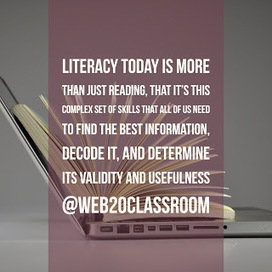"If the most recent U.S. Election has taught us anything it's that we live in an era of fake news and sites. With accusations flying of manipulation of stories, the media and voters, it’s truly hard to know if what we read on blogs, social media and other sites is actually the truth or a tale spun to generate clicks. To further compound the problem a recent study from Stanford shows that the vast majority of students can’t determine it what they read on websites is true or baloney.
The study showed More than two out of three middle-schoolers couldn’t see any valid reason to mistrust a post written by a bank executive arguing that young adults need more financial-planning help. And nearly four in 10 high-school students believed, based on the headline, that a photo of deformed daisies on a photo-sharing site provided strong evidence of toxic conditions near the Fukushima Daiichi nuclear plant in Japan, even though no source or location was given for the photo.
With many schools and districts rolling out 1:1 initiatives and a push to digitize learning, helping students understand where their information comes from, and if it is reliable and accurate are critical skills, not just for learning for but life as well. "
Via Tom D'Amico (@TDOttawa)



 Your new post is loading...
Your new post is loading...







